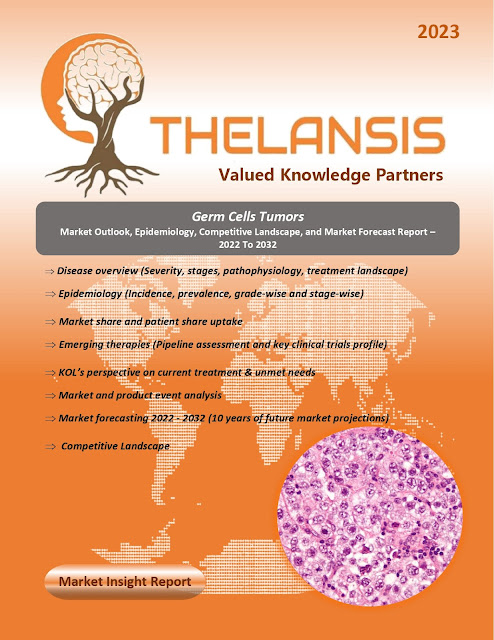Germ Cell Tumors (GCTs) – Market Outlook, Epidemiology, Competitive Landscape, and Market Forecast Report – 2022 To 2032
Germ cell tumors (GCTs) are a heterogeneous group of neoplasms that derive from primordial germ cells and are commonly found in the gonads, but can also occur in the anterior mediastinum, pineal gland, and brain. GCTs can be classified into two major categories, Seminomas and non-seminomas, which have different clinical implications and prognoses. Seminomas generally have a better outcome, while non-seminomatous tumors are more likely to present with metastatic disease or mixed germ cell components. The precise etiology of extragonadal germ cell tumors (EGGCTs) remains controversial, with two theories proposed to explain their origin: aberrant migration of primordial germ cells during embryonic development or reverse migration from the gonads. Intracranial germ cell tumors, including germinoma, have distinct biological properties compared to neuroepithelial tumors, with activating mutations in the c-KIT receptor tyrosine kinase pathway and downstream regulators frequently seen in germinoma. Germinoma has an excellent prognosis, high cure rates, and is sensitive to radiotherapy and chemotherapy. The standard of care for germinoma involves whole-ventricular RT or CT combined with reduced dose ventricular RT. However, late recurrences can occur 10-15 years after treatment.
·
In the United States, the incidence rate of
intracranial GCT has been estimated to be 0.10 cases per 100,000 person-years.
Germinoma comprises most intracranial GCT, accounting for 65% of cases.
Thelansis’s “Germ Cell Tumors (GCTs)
Market Outlook, Epidemiology, Competitive Landscape, and Market Forecast Report
– 2022 To 2032" covers disease overview, epidemiology, drug utilization,
prescription share analysis, competitive landscape, clinical practice,
regulatory landscape, patient share, market uptake, market forecast, and key
market insights under the potential Germ Cell Tumors (GCTs) treatment
modalities options for eight major markets (USA, Germany, France, Italy, Spain,
UK, Japan, and China).
KOLs insights
of Germ Cell Tumors (GCTs) across 8 MM market from the centre of Excellence/
Public/ Private hospitals participated in the study. Insights around current
treatment landscape, epidemiology, clinical characteristics, future treatment
paradigm, and Unmet needs.
Germ Cell Tumors (GCTs) Market Forecast Patient
Based Forecast Model (MS. Excel Based Automated Dashboard), which Data Inputs
with sourcing, Market Event, and Product Event, Country specific Forecast
Model, Market uptake and patient share uptake, Attribute Analysis, Analog
Analysis, Disease burden, and pricing scenario, Summary, and Insights.
Thelansis Competitive Intelligence (CI) practice
has been established based on a deep understanding of the pharma/biotech
business environment to provide an optimized support system to all levels of
the decision-making process. It enables business leaders in forward-thinking
and proactive decision-making. Thelansis supports scientific and commercial
teams in seamless CI support by creating an AI/ ML-based technology-driven
platform that manages the data flow from primary and secondary sources.




Comments
Post a Comment